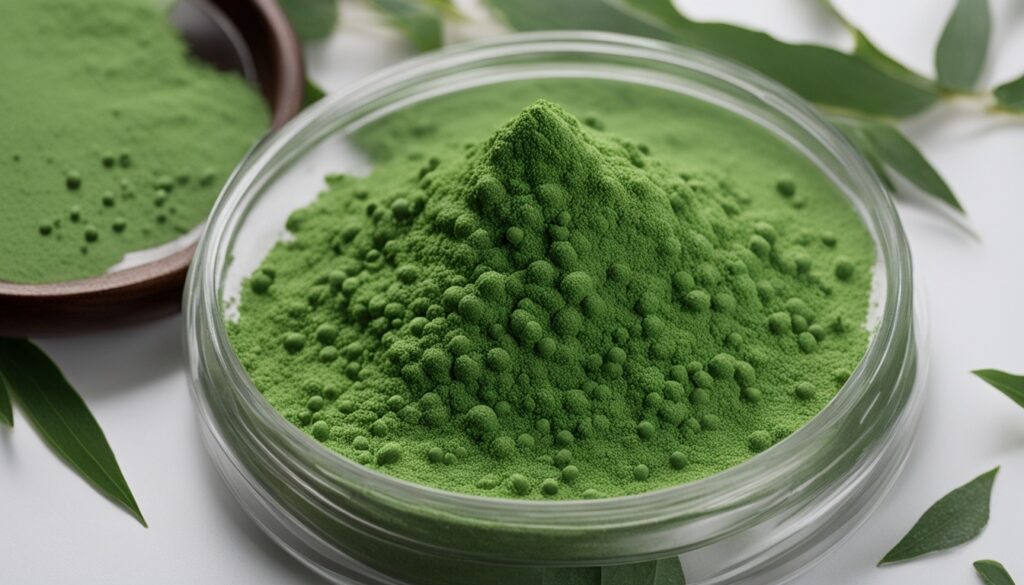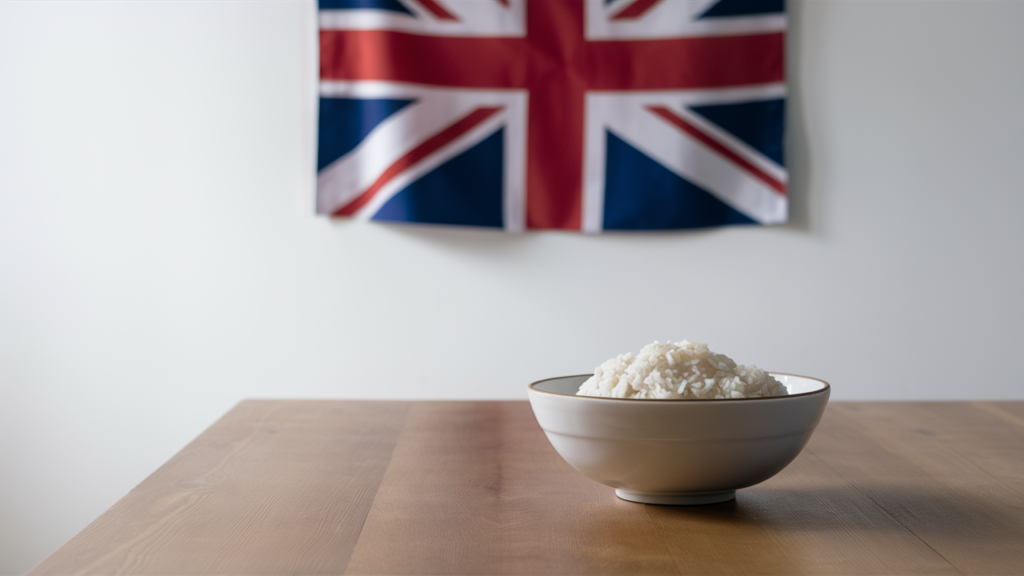Native tapioca starch comes from the cassava root. It’s a versatile, gluten-free ingredient used in many areas like cooking and baking. This root starch is from tropical areas. It’s a top pick for those looking for a natural, plant-based starch option.
Key Takeaways
- Native tapioca starch is derived from the cassava root, a tropical plant
- It is a versatile, gluten-free, and plant-based starch with various applications
- Tapioca starch is a popular choice for those with dietary restrictions or seeking natural ingredients
- The starch offers unique properties and characteristics that make it a valuable ingredient
- Understanding the origins, production, and benefits of native tapioca starch is important for its effective utilization
Understanding Tapioca Starch
Tapioca starch, also known as cassava starch, comes from the cassava plant’s roots. It’s a plant-based starch from South America. It’s popular worldwide for its special uses in cooking.
Origins and Production
The cassava plant, known as Manihot esculenta, is key in many tropical areas. It’s found in Africa, Asia, and Latin America. To make tapioca starch, the roots are washed, grated, and dried. Then, the root starch is refined into the fine tapioca starch we use in many products.
Properties and Characteristics
- Gluten-free: Tapioca starch doesn’t have gluten, so it’s great for people with gluten issues or on paleo diets.
- High Starch Content: Cassava roots give us a starch that’s 80% to 90% starch.
- Neutral Flavor: Tapioca starch tastes mild and doesn’t change the flavor of food, making it useful in many recipes.
- Thickening and Binding: Its high starch makes it a great thickener and binder in cooking.
Health Benefits of Tapioca Starch
Tapioca starch comes from the cassava root and is widely used in cooking. It’s not just useful in the kitchen; it also has health benefits. These make it a great pick for those who care about their health.
Gluten-Free and Allergy-Friendly
Tapioca starch is great because it doesn’t have gluten. This makes it safe for people on a gluten-free diet. It’s also good for those with food allergies, like tree nut, soy, or dairy allergies.
Nutritional Profile
Tapioca starch is mostly carbs, which gives you energy. It’s not the most packed with nutrients, but it can still be part of a healthy diet. It’s a good choice for those looking for a gluten-free option.
Nutrient | Amount per 100g |
Calories | 360 |
Carbohydrates | 88g |
Fiber | 0.3g |
Protein | 0g |
Fat | 0g |
Culinary Uses of Tapioca Starch
Tapioca starch is a versatile ingredient in the culinary world. It has many uses thanks to its unique properties. Chefs and home cooks love it for thickening sauces and improving baked goods texture.
Thickening Agent
Tapioca starch is great as a thickening agent. It makes sauces, gravies, and stews smooth and glossy. Unlike other starches, it doesn’t leave a chalky taste, making it perfect for many dishes.
Baking Applications
In baking, tapioca starch is a top choice. It helps ingredients stick together and improves the texture of baked goods. It’s especially useful in gluten-free and plant-based recipes, helping them taste and feel like traditional treats.
- Enhances the structure of cakes, cookies, and breads
- Helps bind ingredients together in gluten-free and plant-based recipes
For both professional chefs and home cooks, tapioca starch is a key ingredient. It’s a versatile baking ingredient and thickening agent that can take your dishes to the next level. Its unique qualities and broad uses make it essential in any kitchen.
Tapioca Starch in Paleo and Plant-Based Diets
Tapioca starch is now a top pick for those on Paleo and plant-based diets. It comes from the cassava root and fits the Paleo diet’s focus on whole foods. In plant-based cooking and baking, tapioca starch is key. It adds structure, texture, and helps things stick together without animal products.
Tapioca starch is great for Paleo and plant-based diets because it’s gluten-free. This means people with gluten issues can still enjoy lots of foods. It’s also plant-based, making it perfect for vegan and vegetarian recipes.
When making Paleo-friendly breads, cakes, or thickening sauces, tapioca starch is a smart pick. It acts like traditional starches but stays true to Paleo and plant-based diets. This makes it a must-have in today’s kitchens.
The rise of Paleo and plant-based diets means more people want tapioca starch. Its special qualities and fit with these diets make it a top choice for cooks at home and in restaurants.
Where to Buy Native Tapioca Starch
High-quality native tapioca starch is now easy to find. This plant-based baking ingredient is available at many trusted stores and online. Shafi Gluco-Chem is a top supplier with a wide range of premium native tapioca starch for cooking and industrial use.
When looking for tapioca starch, make sure it says “native” or “unmodified”. This ensures you get the best nutritional value and natural benefits. You can find native tapioca starch at grocery stores, specialty food shops, and online. This makes it simple to use this plant-based starch in your cooking and baking.
To find the best native tapioca starch, check out local health food stores, online shops, or contact suppliers like Shafi Gluco-Chem. A bit of research will help you discover this nutritious and versatile baking ingredient. This way, you can improve your cooking and baking.
Tapioca starch is great for Paleo and plant-based diets because it’s gluten-free. This means people with gluten issues can still enjoy lots of foods. It’s also plant-based, making it perfect for vegan and vegetarian recipes.
When making Paleo-friendly breads, cakes, or thickening sauces, tapioca starch is a smart pick. It acts like traditional starches but stays true to Paleo and plant-based diets. This makes it a must-have in today’s kitchens.
The rise of Paleo and plant-based diets means more people want tapioca starch. Its special qualities and fit with these diets make it a top choice for cooks at home and in restaurants.

Tapioca Starch
Tapioca starch, also known as cassava starch, comes from the cassava plant’s roots. It’s gluten-free, has no strong taste, and is very starchy. This makes it useful in many areas, like cooking, baking, and making food products.
The root starch comes from the cassava plant, found in South America. It’s cleaned, grated, and dried to become the white powder we know as tapioca starch. This plant-based starch is great for thickening and binding. That’s why it’s so popular in cooking and industry.
Unique Properties of Tapioca Starch
- Gluten-free and allergy-friendly
- Neutral in flavor, allowing it to blend seamlessly into various dishes
- High in starch content, providing excellent thickening and binding properties
- Resistant to high temperatures, making it suitable for baking and cooking
- Easily digestible and versatile in both sweet and savory preparations
Tapioca starch is loved for its special qualities and flexibility. It’s great for thickening sauces and making baked goods light and fluffy. This gluten-free starch is a must-have in many kitchens and food factories.
Shafi Glucochem: Leading Tapioca Starch Supplier
Shafi Glucochem is a top supplier of native tapioca starch. They focus on sustainability and innovation. They get their tapioca starch from tropical regions. This ensures a consistent product for clients, from food makers to industrial users.
Quality is key for Shafi Glucochem. They have strict quality control and sourcing standards. This makes their tapioca starch better than what’s expected. They’re known as a reliable partner for businesses needing plant-based starch for baking ingredient and other uses.
Shafi Glucochem also cares about the planet. They work with suppliers for ethical and green sourcing. This helps reduce their environmental impact. It also makes them a top choice for companies wanting to be more sustainable and use plant-based starch.
Shafi Glucochem has a global presence and focuses on making customers happy. They lead in tapioca starch quality. Whether you’re in food production, industrial use, or just care about health, Shafi Glucochem is the best for your native tapioca starch needs.
Storing and Handling Tapioca Starch
Storing and handling tapioca starch right is key to keeping its quality high. It’s a plant-based starch and baking ingredient that needs the right care. Here are some tips for storing and handling it well.
Ideal Storage Conditions
Keep tapioca starch in a cool, dry place with good airflow. Make sure it’s away from sunlight and moisture. Use an airtight container or a resealable bag to keep it dry and fresh.
Handling Tapioca Starch
Always use clean, dry tools when handling tapioca starch. This keeps it clean and makes sure it works well in your recipes.
Storage Recommendation | Handling Best Practices |
|
|

By storing and handling tapioca starch correctly, you keep it ready for your baking and cooking. It becomes a dependable baking ingredient for your recipes.
Conclusion
Native tapioca starch is a versatile and valuable ingredient. It’s gluten-free, neutral in taste, and high in starch. These qualities make it a top choice for those looking for natural, plant-based options.
It’s great for thickening sauces and baking. Tapioca starch is becoming more popular worldwide.
We’ve looked into where tapioca starch comes from and its unique traits. We’ve also compared it to tapioca flour to show their different uses. Its health benefits, like being good for gluten-free diets, were also covered.
Tapioca starch has many uses in cooking, from sauces to baking. It’s also popular in Paleo and plant-based diets. Now, people know where to buy it and how to store it, making it easy to use in recipes.
FAQs
What is native tapioca starch?
Native tapioca starch comes from the cassava root. It’s gluten-free and a great choice for cooking and baking. It’s also used in many industries.
What are the origins and production process of tapioca starch?
The cassava plant, native to South America, is used to make tapioca starch. The roots are washed, grated, and dried to get the starch.
How does tapioca starch differ from tapioca flour?
Tapioca starch is pure and refined. Tapioca flour has more fiber and cassava root parts. This affects how they’re used in recipes.
What are the health benefits of tapioca starch?
It’s great for those on gluten-free or plant-based diets because it’s gluten-free and comes from a plant. It’s also hypoallergenic, making it safe for people with food allergies.
How is tapioca starch used in cooking and baking?
It’s used as a thickener in sauces and gravies. In baking, it adds structure and texture, making foods soft and chewy.
How does tapioca starch fit into Paleo and plant-based diets?
It’s popular in Paleo and plant-based diets for its natural, gluten-free qualities. It adds structure and texture without animal products.
Where can I purchase native tapioca starch?
You can find it in grocery stores, specialty shops, and online. Brands like Shafi Gluco-Chem offer high-quality tapioca starch for many uses.
How should tapioca starch be stored and handled?
Keep it in a cool, dry place, away from sunlight and moisture. Use an airtight container to keep it fresh. Always use clean utensils when handling it.











